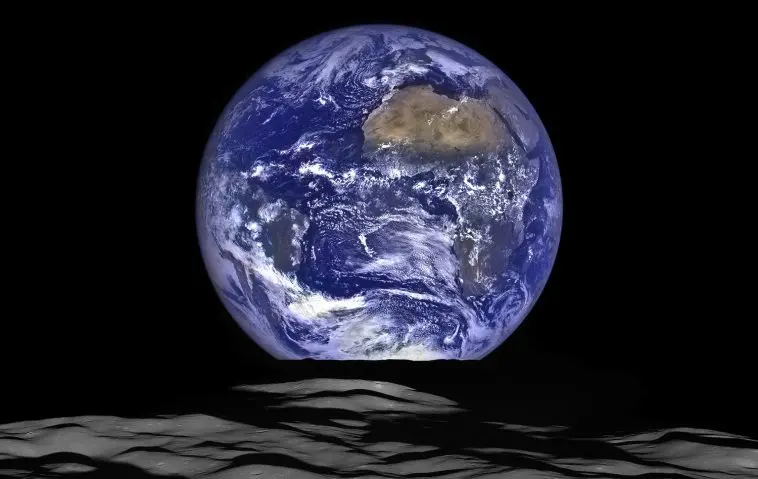[Originally published as the first part of Faulty Speculations on the Pre-Flood World: Part 1]
We here examine some assertions made by Troy, a young-earth creationist who has made some very unorthodox claims about conditions before the Genesis flood.
He believes that the length of a day was much shorter before the flood, only 18 to 20 hours per day and that the flood somehow changed this. As errors go, this is a fairly mild one, and there is nothing heretical or theologically damaging about such a speculation.
But the way in which Troy attempted to defend his conjectures involved serious errors in reasoning, in science, and in biblical interpretation. And these are the same kinds of errors that often lead to bad theology and even heresy.
It is crucial that Christians “accurately handle the Word of Truth” (2 Timothy 2:15). And sometimes the best way to learn to reason properly and to interpret the Scriptures correctly is to see how someone else fails to do these things properly.
Thus, by examining Troy’s many errors, we can become better thinkers, and more accurately handle the Word of Truth.
The two most important principles of all reasoning are:
- we must have a good reason for our beliefs, and
- our reasoning must be self-consistent.
We will see that Troy fails both of these conditions. He doesn’t provide any actual reasons why the days must be 4 to 6 hours shorter in the past. The closest he gets to providing a reason is to simply say that no verse in the Bible says that the days before the flood were 24 hours long.
Students of logic will recognize this as the fallacy of the appeal to ignorance: namely, claiming that something must be true because it hasn’t been proved false. Such a fallacy is always reversible (i.e. the days must be 24 hours since no one has proved otherwise).
When such a fallacy is committed in the context of hermeneutics, it is called the appeal to silence. This is the error of drawing strong conclusions based on what the text does not say. This is a fallacy because texts do not record everything.
An example of the appeal to ignorance/silence would be to argue, “John the Baptist never went to sleep because the Bible never mentions him sleeping.” But just because the text doesn’t say that John slept, we can still conclude that he did because this is part of human nature and there is no basis—no reason—for thinking that this has ever changed.
In fact, there is no biblical or scientific reason to assume that the days before the flood were substantially shorter than our days today, and there are both biblical and scientific reasons to believe they were essentially the same, as we will see.
Here is our Exchange
Troy: To YEC, what verse supports a 24 hour day for each day of creation vs a 20 hour day for each day of creation?
Lisle: Another person on the thread rightly pointed out that we have 24 hours in a day today; this is normative. God upholds His creation in a consistent fashion for our benefit, and this includes the consistency in the day-night cycle. God can supernaturally interrupt that pattern, but there would have to be scriptural support in order to substantiate such an extraordinary miracle (e.g. Joshua 10:12-14; 2 Kings 20:10). And such miracles would be temporary, with nature reverting to its God-ordained cycle after the miracle. But, of course, there is no biblical evidence whatsoever that the days were substantially different before the flood, let alone 20 hours long. So the belief is unwarranted and unjustified.
I would also add that there is biblical evidence for continuity in the day-night cycle. It is something that God promised (Genesis 8:22) and was established at creation (Genesis 1:14-19). Indeed, the day-night cycle is a covenant promise from God and part of the fixed pattern of the universe according to Jeremiah 33:25. It is not something that God will alter because God doesn’t go back on His Word. Thus, any interruption in that cycle would be (1) supernatural and (2) temporary.
We will see below that there was an apparent disruption of that cycle during the flood year, but we have a promise from God that such a pattern will not cease until judgment day.
In any case, 24-hour solar days are normative, and therefore a person who holds to any other position must provide compelling evidence to the contrary.
Troy responded as follows:
Troy: False. We have 23 hours 56 minutes and 4.1 seconds. And earth’s rotational velocity is slowing.
Lisle: Troy has confused a sidereal day with a solar day. A sidereal day is the amount of time the earth takes to rotate as seen from a distant star. Alternatively, it is the amount of time it takes the stars from earth’s perspective to make a complete cycle. A sidereal day is about 23 hours 56 minutes long and is the reason we see different constellations in the summer evening sky than in the winter evening sky: the stars rise four minutes earlier every evening.
But a “day” without the “sidereal” prefix refers to a solar day—the average amount of time it takes the earth to rotate relative to the sun. Since most people prefer to be awake during the daylight hours, we base our time on the solar day, which is indeed 24 hours long.
With regard to the rotation of the earth slowing, this is true. Tidal effects from the moon gradually slow the earth’s rotation, causing the moon to recede. The rate at which this occurs can be computed from the first principles of physics. It is highly non-linear and is quite small over the biblical timescale.
I have done this computation in my book Taking Back Astronomy and shown that the moon was only 750 feet closer to earth by the end of the creation week. When we go through the math [as I will demonstrate in the next article], we find that the duration of a day during the creation week was within one second of its current duration. It was certainly not four hours shorter.
Several people asked Troy to justify his conjecture that the days of the creation week were only 20 hours each, but Troy was either unable or unwilling to provide any rational support for that notion. At best he gave some examples of things that could, hypothetically, affect the rotation rate. But he provided no quantitative evidence for a 4-6 hour difference.
Secularists believe the earth rotated much faster billions of years ago because they believe that tidal recession has been taking place for billions of years. Perhaps Troy accepted their claims without realizing that such claims assume billions of years of tidal interaction which is contrary to the biblical timescale.
Troy: Many things alter the rotational velocity of the Earth. Such as asteroid impacts volcanic activity tectonic plate movements and earthquakes and primarily lunar gravitational force. We don’t even have a 24-hour day. Today it is 23 hours 56 minutes and 4.1 seconds. And the Earth is slowing its rotational velocity because of lunar gravitational force. So you go back in time the Earth spun faster…The Moon is receding away from the earth because it is taking angular momentum away from the spin of the earth. Therefore as you go back in time the moon was closer causing greater ocean tide and slowed the Earth to a greater extent in the past. The further back in time you go the faster the Earth spun which equals a shorter day. Hence you cannot say 24-hour days for each day of creation. You can only say a literal Six-Day creation and perhaps the duration of the day was closer to 18 hours then it was to 24 hours.
Lisle: In my first response directly to Troy, I stated the following:
FYI, that there are 24 hours in a day is an analytic truth because an hour is defined as 1/24th of a day. Logically, there are necessarily 24 1/24ths of a day for each day of the creation week—not 20.
We would not expect to find a reference to “hours” in the creation account because they had not been invented yet. The Egyptians invented the practice of dividing the day into 24 hours. Specifically, they divided the daylight portion into 12 hours, and the night portion into 12 hours. A day can refer to either the 12-hour daylight portion or the 24-hour cycle, as in Genesis 1:5.
This system was in use at the time of Christ’s earthly ministry. So, what verse supports this use of the Egyptian system? In John 11:9 Jesus affirms that there are 12 hours in the day (the light portion) and hence 24 hours in the full cycle. Jesus did not say, “Well, currently, there are 12 hours in day and 12 in a night. But boy were things different at creation!” No, Jesus takes the 24-hour day-night cycle as normative. So should we.
We do indeed have a 24-hour day today—not 23 hours 56 minutes. The latter refers to a “sidereal day” which is different. The Scriptures do not use sidereal days, and when no prefix is specified, “day” refers to a solar day (a 24-hour day) or the light portion thereof—not a sidereal day. So, there are indeed 24 hours in a day.
By the way, there are exactly 24 sidereal hours in a sidereal day, just as there are 24 (solar) hours in a (solar) day. Be careful not to confuse categories.
The tidal angular momentum transfer to the moon does indeed slow earth’s rotation. But the effect can be calculated and is very small on the biblical timescale. The difference in the objective length of a day between creation and now is less than one second.
We will go through the math later and demonstrate this.
I hope this helps.







